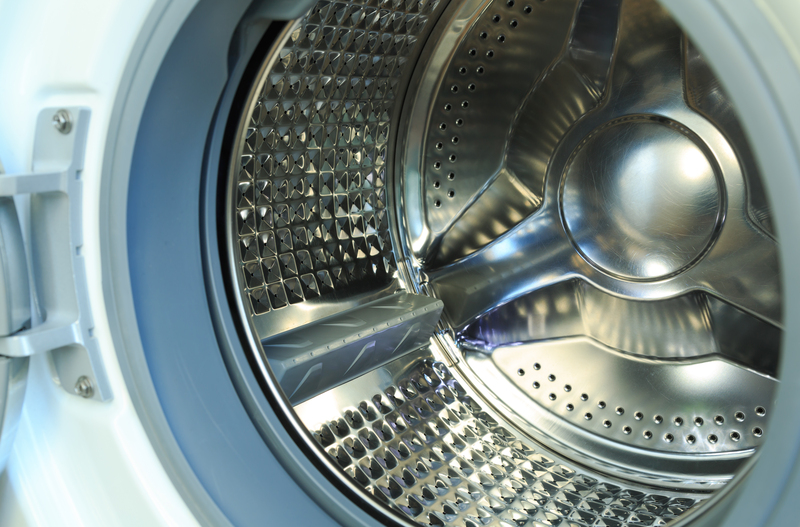Jewellery Revival: Time-Tested Cleaning Approaches
Posted on 11/09/2025
Jewellery Revival: Time-Tested Cleaning Approaches
Jewellery is more than just an accessory; it holds memories, signifies special moments, and often becomes part of our identity. Over time, even the most treasured jewellery pieces can lose their luster, tarnish, or accumulate grime. Whether it's a cherished gold necklace, a dazzling engagement ring, or an inherited heirloom, maintaining jewellery requires knowledge, care, and reliable cleaning techniques. In this article, we'll unlock time-tested cleaning approaches to help you embrace jewellery revival at home, ensuring your gems and metals sparkle for generations.
Understanding Jewellery Revival: Why It Matters
Maintaining the brilliance and integrity of jewellery is vital, not just aesthetically but for its longevity. Over time, exposure to everyday elements like sweat, perfumes, lotions, and just air can leave deposits and tarnish on your precious pieces. Jewellery revival is the combination of proper cleaning, restoration, and ongoing maintenance. Routine care preserves both the emotional value and the monetary worth of your jewellery collection.
Common Enemies of Jewellery
- Oils & Residue: Skin contact leaves natural oils on jewellery, leading to buildup.
- Moisture & Humidity: Water can cause metals--especially silver--to tarnish.
- Chemicals: Household cleaners, chlorine, and beauty products may cause pitting or dullness.
- Dust & Pollution: Particles in the air settle into details and crevices.
By practicing time-honored cleaning methods, you can revive even forgotten treasures from your jewellery box.

Essential Jewellery Cleaning Approaches for Safe Sparkle
Each type of jewellery--gold, silver, gemstones, pearls, costume--requires individual care. Using the wrong approach may lead to permanent damage. Here's a comprehensive guide to jewellery revival with cleaning techniques tailored for different materials.
Cleaning Gold Jewellery: Classic Methods for Lasting Shine
Gold is a timeless metal, but it tends to attract fingerprints and body oils. Here's how you can restore its radiance with tried-and-true methods:
-
Gentle Soap and Water Soak:
- Fill a small bowl with warm water and a few drops of mild dish soap.
- Soak gold items for 15-20 minutes to loosen dirt.
- Use a soft-bristled toothbrush to reach corners and engravings.
- Rinse thoroughly under lukewarm water and pat dry with a soft cloth.
- Polishing Cloth: Special firm-but-soft cloths remove smudges and restore brilliance without scratching.
Tip: Avoid abrasive cleaners or toothpaste, which can scratch gold's surface.
Silver Jewellery Revival: Banishing Tarnish the Traditional Way
Silver naturally reacts with air, causing tarnish. To revive aged silver jewellery, try these trusted techniques:
-
Baking Soda and Water Paste:
- Mix three parts baking soda to one part water for a paste.
- Gently rub onto the silver using a lint-free cloth.
- Rinse and buff until gleaming.
-
Foil and Salt Bath (Electrolytic Cleaning):
- Line a bowl with aluminium foil (shiny side up).
- Add hot water, one tablespoon baking soda, and a pinch of salt.
- Place silver items in contact with foil--chemical reaction removes tarnish effectively.
- Rinse, then dry immediately to avoid water stains.
Note: Avoid these methods for antique silver pieces with intentional oxidation (patina), as it may strip desired finishes.
Gemstone Jewellery: Safeguarding Sparkle
Jewels like diamonds, rubies, sapphires, and emeralds deserve special attention. Proper jewellery cleaning approaches keep stones dazzling and secure:
- Soapy Water and Soft Brush: Delicate gemstones respond well to a gentle warm soapy soak and a very soft brush (such as a baby toothbrush).
- Inspect Settings: Regularly check for loose prongs or backs to prevent loss of stones during cleaning.
-
Ammonia Solution (for diamonds only):
- Mix six parts water to one part ammonia for an intensive clean.
- Soak for no more than one minute; brush off dirt and rinse.
Warning: Never use ammonia with pearl, opal, or turquoise jewellery, as it can cause irreparable damage.
Caring for Pearl and Organic Jewellery
Pearls are delicate and easily damaged by chemicals and excessive moisture. To revive pearl jewellery safely:
- Wipe pearls after every wear with a soft, damp cloth.
- Avoid immersion in water--moisture can weaken the silk thread of pearl necklaces.
- If deeper cleaning is needed, use a cloth barely dampened with diluted mild soap, then wipe dry.
- Store pearls in a breathable bag--never plastic--to retain their natural sheen.
Reviving Costume and Fashion Jewellery
Costume jewellery is often crafted from base metals, glass, or resin, which require extra caution. Here's how to clean without damage:
- Use a soft, dry cloth to wipe away debris and fingerprints.
- Avoid harsh chemicals or soaking--adhesives holding stones may dissolve.
- For stubborn grime, dampen a cotton swab with water and very gently clean around stones and metal.
Pro Tip: Always dry thoroughly to prevent corrosion.
Advanced Jewellery Cleaning Tips for At-Home Success
Long-term jewellery revival depends on both cleaning and proper care. Enhance your jewellery revival routine with these time-honored strategies:
Routine Maintenance Habits
- Remove jewellery before swimming, showering, or using household cleaners.
- Store each piece separately in a soft pouch or lined box to prevent scratches.
- Have valuable or sentimental pieces professionally inspected once a year for integrity.
Proper Storage Techniques
- Use anti-tarnish strips in storage boxes for silver pieces.
- Hang necklaces to avoid tangling.
- Keep pearls away from other items to prevent scratches.
Knowing When to Seek Professional Jewellery Revival
- Extensive tarnish, structural damage, or loose settings need expert intervention.
- Professional jewellers use ultrasonic cleaners, steamers, and advanced polishers for dramatic results.
- Heirloom or antique jewellery, especially with fragile enamels or rare stones, should always be handled by specialists.
DIY vs. Professional Jewellery Cleaning: Which Is Right for Your Collection?
Bringing the sparkle back to your jewellery is possible at home--provided you use tested methods appropriate for each material. However, certain circumstances necessitate expert care:
- If the piece is extremely valuable or holds sentimental value, err on the side of caution and consult a professional.
- Complex gemstones, soft stones, and pieces with delicate settings should not be exposed to aggressive cleaning techniques.
Ultimately, an informed approach balances DIY jewellery cleaning with occasional professional revival to keep your cherished pieces in pristine condition.
Eco-Friendly and Natural Approaches to Jewellery Revival
As we become more conscious of our environmental footprint, many seek sustainable, natural alternatives for jewellery maintenance. Here are some eco-conscious cleaning ideas that are safe for you and your precious pieces:
Baking Soda and Vinegar for Silver
- Create a paste with equal parts baking soda and white vinegar.
- Apply gently with a cloth, rinse, and buff dry.
Lemon Juice for Brass and Copper Jewellery
- Squeeze fresh lemon juice and add a dash of baking soda.
- Rub onto brass or copper pieces with a soft cloth, then rinse and dry.
Olive Oil for Gold Polishing
- Use a drop of olive oil on a soft cloth to add a finishing touch after cleaning gold jewellery.
- The oil provides a natural shine without harsh chemicals.
Common Jewellery Cleaning Mistakes to Avoid
For optimal jewellery revival, steer clear of these frequent pitfalls:
- Using toothpaste, baking powder, or abrasive scrubs--these can scratch metals and stones.
- Soaking porous gemstones or soft organic materials--they can crack, fade, or lose their finish.
- Exposing jewellery to bleach, ammonia (for non-diamond pieces), or alcohol where not recommended.
- Neglecting to dry pieces thoroughly--trapped moisture can cause rust, tarnish, or thread weakening.

Frequently Asked Questions About Jewellery Cleaning
-
How often should I clean my jewellery?
Lightly worn pieces benefit from monthly cleaning, while everyday items like rings and earrings may need weekly attention. -
Is ultrasonic cleaning safe for all jewellery?
No. Ultrasonic machines can loosen stones or damage soft gems. Consult a jeweller before use, especially with vintage or delicate collections. -
Can vinegar damage jewellery?
Vinegar is safe for silver and base metals but can harm pearls, soft stones, and gold settings. Always test on a small area first.
Conclusion: Embrace the Art of Jewellery Revival
Reviving your jewellery doesn't require fancy gadgets or expensive products--just knowledge, patience, and respect for materials. By employing time-tested cleaning approaches and following expert-recommended care routines, you can preserve the beauty and brilliance of your collection for decades to come. From gentle soap-and-water soaks to advanced eco-friendly techniques, each method supports lasting shine, value, and sentimental connection.
The time you invest in jewellery revival today ensures that your treasured pieces will continue to delight, inspire, and tell their stories for generations.




